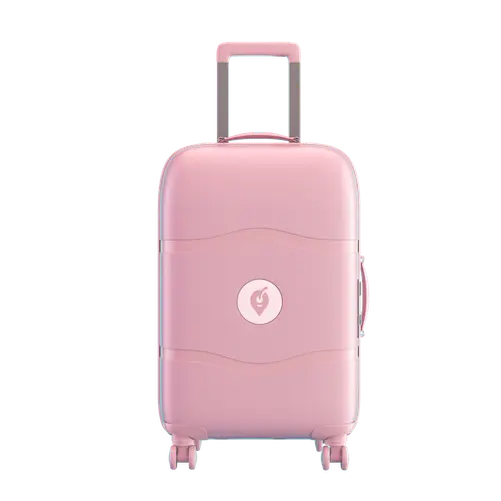ALL you should know about Mount Vesuvius before visiting

Mount Vesuvius, the infamous volcano that buried the ancient cities of Pompeii and Herculaneum, remains one of the most fascinating and historically significant sites in the world. Standing majestically over the Bay of Naples, this active volcano is not only a natural wonder but also a symbol of nature's power and unpredictability. Before you embark on your journey to Mount Vesuvius, you should know several key things to make your trip as smooth and enjoyable as possible.
Safeguard Your Belongings
Before the Climb When planning a trip to Mount Vesuvius, it's important to consider what to do with your belongings, especially if you're traveling with luggage. The climb up the volcano can be challenging, and carrying extra weight is far from ideal.
Fortunately, services like Nannybag luggage storage can help. Nannybag allows you to store luggage safely in various locations around Naples, giving you the freedom to explore without the burden of heavy bags. This service is handy if you arrive in Naples via train station or public transport and want to head straight to the mountain.
A Brief History of Mount Vesuvius
Mount Vesuvius is one of the most dangerous volcanoes in the world, with a history of catastrophic eruptions. The most famous eruption occurred in AD 79 when the volcano erupted violently, spewing lava flows and ash that buried the Roman cities of Pompeii and Herculaneum. This tragic event preserved these cities in remarkable detail, offering a unique glimpse into life in ancient Rome.
Over the centuries, Mount Vesuvius has erupted several times, with the most recent significant eruption in 1944. Today, the volcano is closely monitored, but it remains an active and unpredictable force of nature.
Why Visit Mount Vesuvius?
Visiting Mount Vesuvius is an unforgettable experience that offers more than just the thrill of being on an active volcano. The views from the summit are breathtaking, providing panoramic vistas of the Bay of Naples, the city of Naples, and even the distant Amalfi Coast. The volcano is also part of Vesuvius National Park, a protected area that boasts a variety of flora and fauna, making it a great destination for nature lovers as well.
In addition to the natural beauty and stunning views, Mount Vesuvius holds immense historical and cultural significance. As the infamous volcano responsible for the destruction of Pompeii and Herculaneum in 79 AD, it offers visitors a rare glimpse into ancient history.
The excavated ruins of these cities, preserved under layers of volcanic ash, provide a haunting yet fascinating look at Roman life frozen in time. Walking along the crater, you can feel the weight of history, imagining the sheer force of the eruption that shaped the region. This blend of geological wonder and historical intrigue makes a visit to Mount Vesuvius not only visually impressive but intellectually enriching as well.
Is Climbing Mount Vesuvius Free?
One of the most common questions visitors ask is, "Is climbing Mount Vesuvius free?" The answer is no, but the fees are modest and well worth it. You need to purchase a ticket to access the trail leading to the crater.
The ticket office is located near the parking lot at the starting point of the climb. The ticket cost usually includes a guided tour, which is highly recommended as the guides provide valuable insights into the volcano's history and geology.
Mount Vesuvius Tips for a Successful Visit
Footwear: One of the most important Mount Vesuvius tips is to wear appropriate footwear. The terrain is rocky and uneven, so flip flops are not advisable. Opt for sturdy hiking shoes or sneakers for a comfortable and safe climb.
Timing: The best time to visit Mount Vesuvius is early in the morning or late in the afternoon. The midday sun can be harsh, especially in the summer months. Plus, visiting early or late in the day can help you avoid the crowds.
Weather: Check the weather forecast. While Mount Vesuvius can be visited year-round, weather conditions can affect your experience. For safety reasons, the path to the crater may be closed during heavy rain or fog.
Water and Snacks: There are no shops or restaurants at the summit, so be sure to bring water and snacks with you. Hydration is key, especially during the climb.
Photography: Don’t forget your camera or smartphone! The views from the summit are spectacular, and you’ll want to capture the moment. However, be cautious near the crater’s edge.

How to Reach Mount Vesuvius
Mount Vesuvius is located in southern Italy, just a short distance from Naples. There are several ways to reach the volcano:
By Car: If you have a car, you can drive up to the parking lot near the starting point of the climb. From there, it's a 30-minute hike to the crater.
By Public Transport: From Naples, you can take a train from the central train station to Ercolano Scavi or Pompeii, and then transfer to a local bus that takes you up to the entrance of Vesuvius National Park. Public transport is convenient, especially if you're staying in Naples or the surrounding areas.
Guided Tour: Many visitors opt for a guided tour, which typically includes transportation, entrance fees, and the services of a knowledgeable guide. This hassle-free option allows you to relax and focus on enjoying the experience.
Exploring Pompeii and Herculaneum
A visit to Mount Vesuvius would only be complete with exploring the ancient ruins of Pompeii and Herculaneum. These archaeological sites are located near the volcano's base and offer a haunting yet fascinating glimpse into life in ancient Rome before Mount Vesuvius erupted in AD 79. Both sites are well-preserved, with volcanic ash frozen streets, homes, and public buildings in time. Pompeii is larger and more famous, but Herculaneum is smaller and more intimate, offering a different perspective on the disaster.
Dining and Accommodation Options
After a day of exploring, you'll likely be hungry and ready to relax. Fortunately, the area around Mount Vesuvius offers dining and accommodation options to suit all tastes and budgets.
Ristorante Il Pino
This charming restaurant offers a variety of traditional Italian dishes, including fresh seafood and homemade pasta. The terrace provides stunning views of Mount Vesuvius, making it a perfect spot for a post-climb meal.
Via Vesuvio, 85, 80040 Trecase NA, Italy, €€
Herculaneum Gate
Located near the Herculaneum ruins, this restaurant serves Italian and Mediterranean cuisine. The seafood here is particularly popular, and the service is warm and welcoming.
Corso Resina, 185, 80056 Ercolano NA, Italy, €€-€€€
Vesuvius Winery
For a more upscale dining experience, Vesuvius Winery offers a fine selection of wines produced from grapes grown on the slopes of Mount Vesuvius. The food is gourmet, and the atmosphere is elegant, making it ideal for a special occasion.
Via Panoramica Fellapane, 204, 80056 Ercolano NA, Italy. €€€

Hotel San Mauro
This comfortable hotel is located near Mount Vesuvius and offers modern amenities, including a pool and free parking. It’s a great option for travelers who want to stay close to the volcano.
Via Casarea, 45, 80013 Casalnuovo di Napoli NA, Italy. €€
Villa Signorini Hotel
This elegant villa offers luxurious rooms and beautiful gardens. It’s located near the Herculaneum ruins, making it a convenient base for exploring both the archaeological sites and Mount Vesuvius.
Via Roma, 43, 80056 Ercolano NA, Italy. €€€
Il Giardino degli Aranci
A boutique hotel with stunning views of the Bay of Naples and Mount Vesuvius, this accommodation offers a peaceful retreat with easy access to the volcano.
Via Panoramica, 43, 80056 Ercolano NA, Italy. €€€

Say hello to exploring and goodbye to heavy bags!
What if you could enjoy every minute in the city without the burden of your bags?
- Safe luggage storage for a flat daily price of 4,50 €/luggage item
- Included luggage protection of up to €10000 in case of breakage, loss or theft
